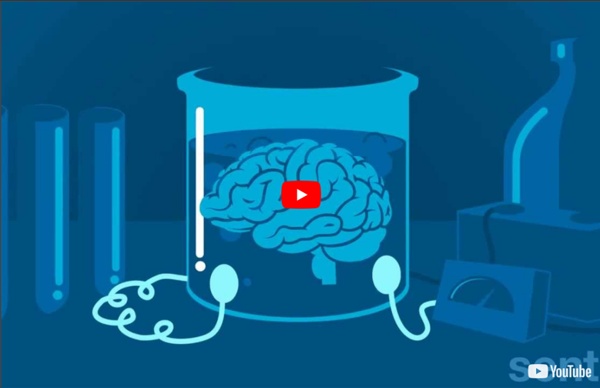



ee2cd9c253e42aab7b87684343b7d97f Learned Optimism: Martin Seligman on Happiness, Depression, and the Meaningful Life by Maria Popova What 25 years of research reveal about the cognitive skills of happiness and finding life’s greater purpose. “The illiterate of the 21st century,” Alvin Toffler famously said, “will not be those who cannot read and write, but those who cannot learn, unlearn, and relearn.” Our outlook on the world and our daily choices of disposition and behavior are in many ways learned patterns to which Toffler’s insight applies with all the greater urgency — the capacity to “learn, unlearn, and relearn” emotional behaviors and psychological patterns is, indeed, a form of existential literacy. Last week, Oliver Burkeman’s provocatively titled new book, The Antidote: Happiness for People Who Can’t Stand Positive Thinking, prompted me to revisit an old favorite by Dr. Seligman begins by identifying the three types of happiness of which our favorite psychology grab-bag term is composed: The optimists and the pessimists: I have been studying them for the past twenty-five years. Share on Tumblr
Brain Basics Introduction Watch the Brain Basics video Welcome. Brain Basics provides information on how the brain works, how mental illnesses are disorders of the brain, and ongoing research that helps us better understand and treat disorders. Mental disorders are common. You may have a friend, colleague, or relative with a mental disorder, or perhaps you have experienced one yourself at some point. Some people who develop a mental illness may recover completely; others may have repeated episodes of illness with relatively stable periods in between. Through research, we know that mental disorders are brain disorders. Scientists are continually learning more about how the brain grows and works in healthy people, and how normal brain development and function can go awry, leading to mental illnesses. Brain Basics will introduce you to some of this science, such as: The Growing Brain Inside the Brain: Neurons & Neural Circuits Neurons are the basic working unit of the brain and nervous system. Brain Regions
73341 004 56AB406B Humans of New York Dopamine and the Diseased Brain | BenthamScience Abstract: Dysfunction of central dopaminergic neurotransmission has been implicated in a series of neuropsychiatric disorders, including Tourettes syndrome, schizophrenia, and drug and alcohol dependence. The behavioral and psychopathological manifestations of central dopaminergic dysfunction differ depending on the site of their neurobiological correlate. Keywords: anhedonia, incentive salience, working memory, Tourette's syndrome, depression, alcohol, Schizophrenia Affiliation: Thorsten Kienast, Department ofPsychiatry and Psychotherapy, St.
a 05 cr her 1a Kierkegaard on Our Greatest Source of Unhappiness by Maria Popova Hope, memory, and how our chronic compulsion to flee from our own lives robs us of living. “How we spend our days is, of course, how we spend our lives,” Annie Dillard memorably wrote in reflecting on why presence matters more than productivity. In a chapter of the altogether indispensable 1843 treatise Either/Or: A Fragment of Life (public library), the influential Danish thinker Søren Kierkegaard (May 5, 1813–November 11, 1855), considered the first true existentialist philosopher, explores precisely that — how our constant escapism from our own lives is our greatest source of unhappiness. Kierkegaard, who was only thirty at the time, begins with an observation all the timelier today, amidst our culture of busy-as-a-badge-of-honor: Of all ridiculous things the most ridiculous seems to me, to be busy — to be a man who is brisk about his food and his work. (It’s worth remembering, here, that “busy is a decision” — one we constantly make, and often to our own detriment.)
The Involvement of a Na - and Cl–-Dependent Transporter in the Brain Uptake †Drug Delivery, Disposition and Dynamics and ‡Centre for Drug Candidate Optimisation, Monash Institute of Pharmaceutical Sciences, Monash University, Parkville, Victoria, Australia § Department of Medicine, Weill Medical College of Cornell University, New York, New York, United States Department of Life, Health and Chemical Sciences, Open University, Milton Keyes, U.K. INSERM (U1016) Institut Cochin, Paris, France # CNRS (UMR8104), Paris, France Université Paris Descartes, Paris, France Mol. DOI: 10.1021/mp2004127 Publication Date (Web): February 21, 2012 Copyright © 2012 American Chemical Society *Drug Delivery, Disposition and Dynamics, Monash Institute of Pharmaceutical Sciences, Monash University, 381 Royal Parade, Parkville, Victoria 3052, Australia. Section: Abstract Despite their structural similarity, the two anti-influenza adamantane compounds amantadine (AMA) and rimantadine (RIM) exhibit strikingly different rates of blood–brain barrier (BBB) transport. Citing Articles